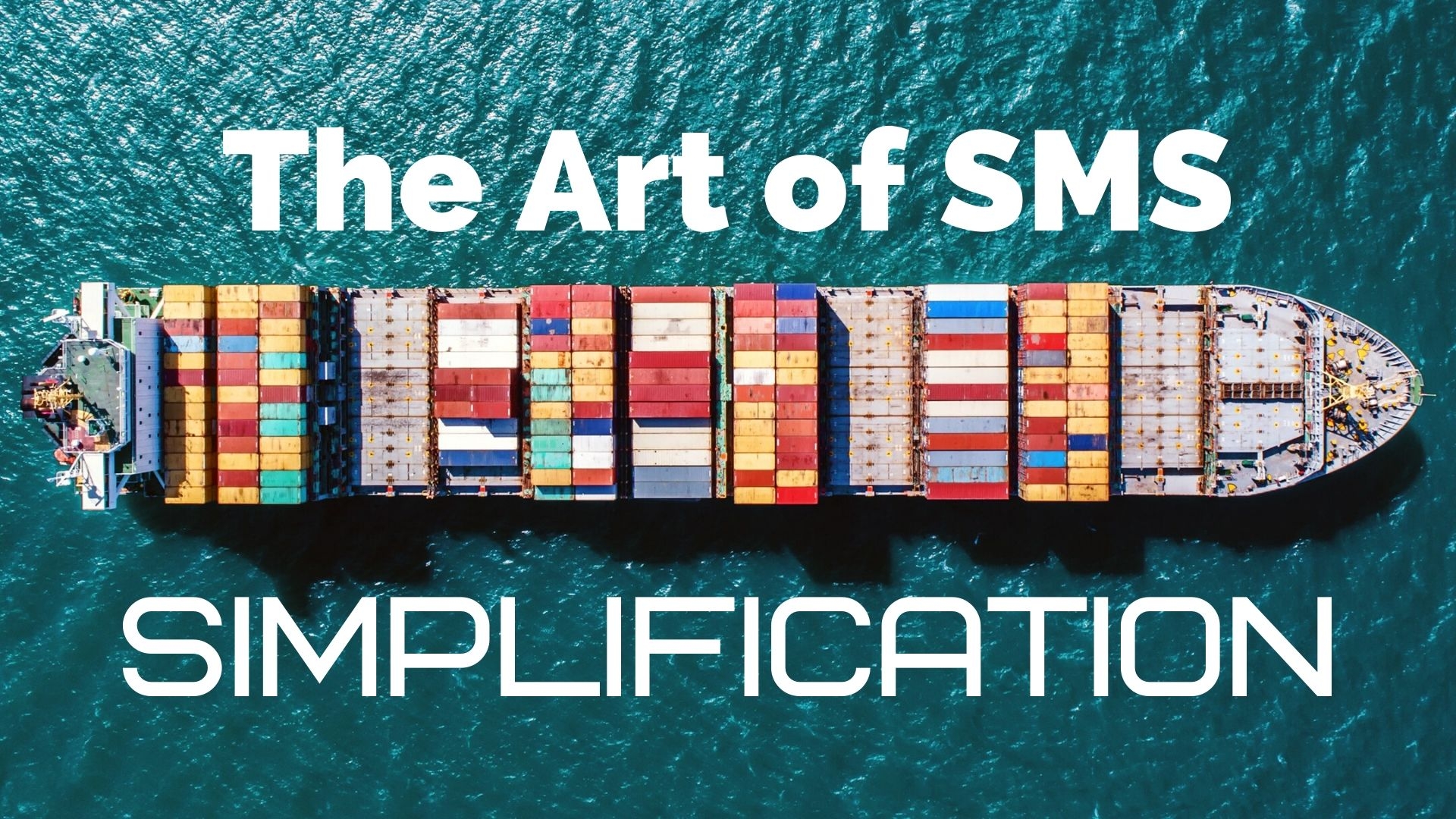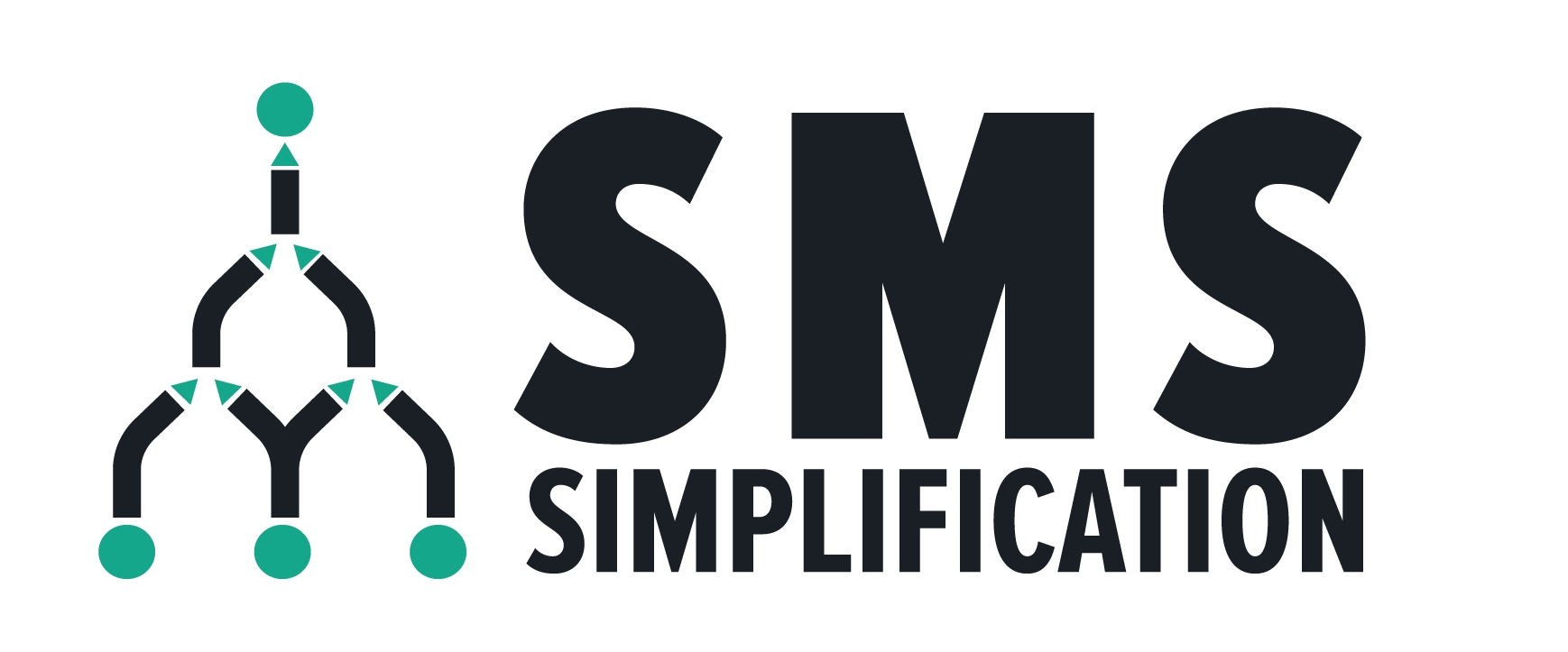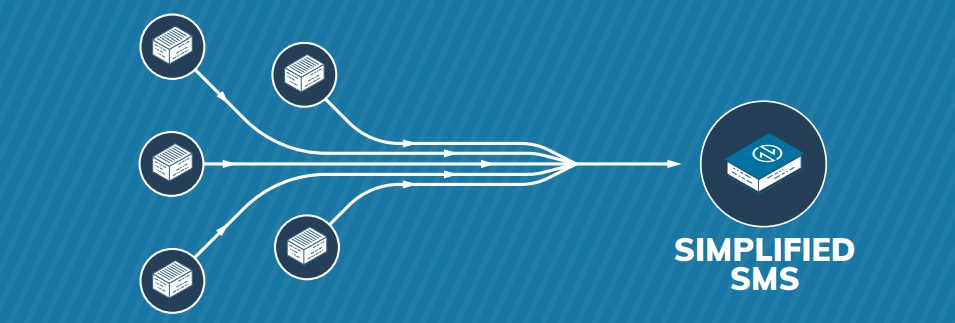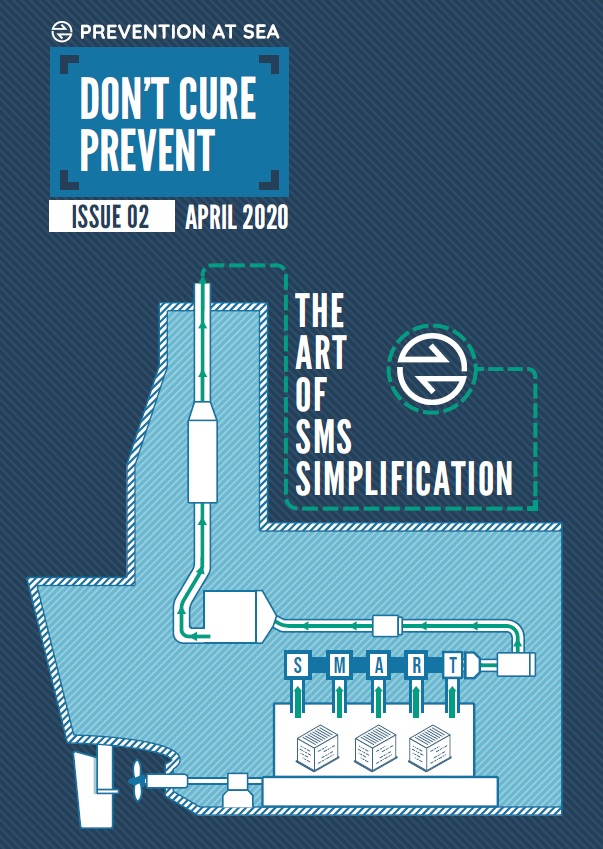
(www.MaritimeCyprus.com) WHAT IS SIMPLIFICATION? Simplification is the art of reducing complexity and making things simpler while at the same time achieving the same objective, without compromising any of the deliverables.
The implementation of the ISM Code (International Safety Management Code) on the 1st of July 1998 constitutes a milestone in the shipping industry as it was the first standard attempting to establish safety-management objectives through the Safety Management System (SMS), a pre-requisite for every ship management company.
In the beginning, the wind of change was not so positive though; despite the support by the stakeholders and the recognition of its importance, the ISM Code and the SMS, as every new change, were initially treated with skepticism with regards to their real intention.
For many years, a debate took place across the industry, before and after the ISM Code enforcement, which revolved around arguments and theories of the real reasoning surrounding the subject Code whilst various voices were highlighting the potential risks of taking advantage of the Code's objectives.
To the author's eyes, the Safety Management System was the puzzle's missing piece. Between others, the SMS undertook the role of the bridge between the management of the old school shipping and the future generations of young seafarers and shipping professionals. The 'purpose' of the SMS is to become an accurate and effective tool in a Company's hands with the aim to secure a safe business environment, awareness, smooth fleet management, implementation of best practices and good seamanship, through standardization and efficient 'transfer' of knowledge, something that was missing across the industry at the time.
Back in the 90s, the prevailing interpretation of the ISM Code with regards to the SMS content was pointing to a different direction. The industry believed that every aspect with regards to the fleet operation and management framework, regardless of its nature and importance, should be elaborated and thoroughly analyzed within the Company's SMS. Several processes and procedures were developed at the time with the hope to be 'on the safe side'. Thus, due to the urgency and lack of experience, the majority of the first Safety Management Systems which appeared in the industry, did not accurately reflect the company's actual operations and they consisted of a vast number of modules, several processes/procedures and extended content without proper design or following specific standards.
Over the years, people kept adding content in the SMS by constantly increasing the recording of events, administration and paperwork with the aim to retain evidences that would potentially secure strong defense in case of a 'disaster'. Unavoidably, this practice resulted in bureaucracy, rigid and conflicting procedures, inconsistency, ambiguity and complexity.
The shipping industry is run by people, for people as people design ships, build them, own them, crew them, maintain them, repair and salvage them. People also regulate them, survey, underwrite and investigate when things go wrong-The Human Element, published by SCULD
Records prove that more than 70% of accidents affecting maritime safety are attributed to wrong judgement, lack of use of common sense and critical thinking, miscommunication and lack of shipping knowledge. All summarized under the term 'human element' failure.
The term 'element' should not be misinterpreted as something that occurs on the sidelines. Humans and their decisions affect shipping tremendously as they are at the very center of the industry. Every few minutes a new decision is taken that may affect the working environment or established procedures of a ship's daily work routines right through to the policy decisions taken on an international level.
The 'human' side of risk first began to attract real attention in the 1990s. And the rise of e-navigation and a range of automated functions onboard have raised concerns that seafarers can depend too much on 'Windows' rather than actually looking out of the window.
Many investigations in the past attributed the occurrence of accidents to the human element concluding that the corresponding SMS procedure was not followed properly despite the prior SMS familiarization that took place. It was noticed though that 'not following the procedure is not always the root cause. On the contrary, it is a risk indicator that the structure of the procedure may lack in accuracy, simplicity and the 'message' was not conveyed properly.
There are two important points to recognize here with regards to the human element.
Being a seafarer is one of the most difficult professions. Seafarers spend their rest periods on board away from family and friends; they have to socialize with their colleagues of possibly different cultures and languages when off duty and cope with challenging conditions of rough seas, strong winds, high or low temperatures; they are expected to remain updated on existing/new regulations, familiar with the SMS, communicate/act and react fast possibly in different languages, taking the correct and appropriate decisions in a very short timeframe. Add to this the time difference, distance, potential language barriers
and a complicated SMS with lengthy processes in place, and there is clearly a potential volcanic mixture of risks they are about to escalate.
It is sometimes forgotten that seafarers are not the only humans here. Yes, the surrounding conditions and the working environment may well be more pleasant when working in the office, but onshore shipping professionals are also under pressure to deliver quick actions and correct decisions. The expectations and demands are high and the 24/7 nature of our industry means that people involved in finance, fleet management, insurance, brokerage, chartering and so on, have to remain alert and often continue working far beyond 'normal' office hours. These people also need effective support and clear 'messages' deriving from the SMS to 'ring the bell' before potential risk exposures escalate.
Indeed, both factors, the heavy workload and the content complexity, are reasonably discouraging the reader to go through lengthy processes and procedures. Even if someone has the patience, the comfort and the time to read carefully the SMS, soon such attempt shall be aborted due to the absence of an attractive design, consistent infographics, precise workflows and well-structured presentation of the most important
information.
Despite the amendments over the years, it is commonly accepted that Safety Management Systems still suffer from inherited structural complications, complex procedures and absence of simple and accurate workflows. This happens for a number of reasons.
People have the tendency to fill out empty spaces with more information in an attempt to ensure that every aspect is covered in detail and no material is left behind. This approach in combination with the bad practice of reducing the font size for squeezing the text creates frustration, disturbance and distraction to the reader's attention.
The early Safety Management Systems were developed by experienced shipping professionals who were wearing the Auditor's hat since they have been working onshore for many years after their sea service. Thus, another issue encountered over the years is that the SMS is 'built' to serve the Auditor and the auditing process whereas it should be exactly the opposite by letting the Auditor spend time in 'interpreting' and
understanding the structure of the end user friendly system.
Many reported cases also revolve around the fact that the end user cannot interpret the 'message' through the lines due to the content complexity and ambiguity, the words used in the text and/or the lengthy sentences missing most of the times the useful punctuation.
We should always remember the profile of the end user on board and onshore, who in turn is expected to comprehend the SMS and implement the desired policies and framework at once under certain circumstances and stressful conditions most of the times. It is very often forgotten that the SMS is addressed to shipping professionals who are bombarded with hundreds of emails and documents from different sources on a daily basis, thus its content must be precise, coherent and simple.
Particularly on board, due to the industry's mobile nature, it should be remembered that many different nationalities may coexist and only a few of them may be English native speakers.
With the aim to understand how difficult a passage in English is to understand, there are two available tests to evaluate readability, i.e. the Flesch-Kincaid readability tests, both widely used in various industries. Both of them, the Flesch Reading Ease and the Flesch-Kincaid Grade Level, are used in the field of education and particularly the "Flesch-Kincaid Grade Level Formula" presents a score, making it easier for teachers and parents, to determine the readability level of various books and texts.
However, apart from the tests that will indeed indicate the readability level, it would be prudent to also actively involve the end user, engaged in the 'field of implementation', by asking them to rate the SMS content in use and submit their opinion in bettering the existing processes and procedures.
Passive voice, redundant elements and duplicate information in different locations within the SMS - sometimes conflicting each other - is another factor that the existing content may lead to adverse results such as confusion and misleading.
Checklists are indeed a very useful tool whenever guidance to the end user is necessary. Such guidance to be effective though must be performed through accurate checklists leaving no room for vagueness and deviation from the goal. Such checklists must not be lengthy and contain only the absolute necessary information in a well-structured, consistent and concise template.
One of the issues encountered over the years in SMS, is that shipping organizations do not maintain a specific framework whenever new processes and procedures or amendments to the current ones take place.
On the contrary, it has been observed that such task is undertaken randomly by individuals within the organization who are considered to be the most familiar or experienced to do so. However, this practice leads to different expressions and text structure which unavoidably reflect the author's style rather than the organization's concrete policy on the subject. Also, in many cases, it has been noticed that when a revision to the SMS took place, the existing content has not been reviewed thoroughly which in turn resulted in duplication or contradictive references in different locations within the SMS.
Some organizations took the decision to utilize SMS software systems to overcome complexity. Although this solution sounds practicable and reasonable, it has been observed that if no specific simplification standards are implemented during the conversion from paper to an SMS software system, the expected output is below expectations. Thus, content of high quality is imperative regardless the tool in use.
Simplification is the fundamental to providing accurate instructions, reducing the likelihood of incidents at work and identifying complicated and time-consuming tasks.
The first priority of simplifying an operational process should always be to achieve a safe business environment – safe person'.
Nonetheless, 'simple' should not be confused with 'simplistic' as simplification describes the effort and strategy to take advantage of the way people see and process information.
Particularly in the shipping industry, it is suggested through TMSA 9.2.1, that the SMS safe working procedures should be shaped only after a thorough risk assessment takes place, taking into consideration not only the nature of the task but also the potential surrounding conditions and the people risk perception.
Simplification based only on reducing the length of the text is not panacea. It is prudent, shipping professionals working on SMS simplification to first analyze the Industry's requirements and also remember the obligation to comply with specific rules and standards set by stakeholders such as Oil Majors which in turn may require certain procedures to be available within the SMS in writing; such requirement though, does not indicate a 'plain text approach'.
Simplification is a continuous process. One of the most recommended ways to simplify is to reduce the number of elements on a page. Every picture along with the relevant text triggers the visual senses and contributes to the complexity of the presentation whilst the aim is to use the fewest possible 'ingredients' to convey the message without sacrificing high quality.
Simplicity can also be achieved by systematically re-structuring and re-organizing the remaining elements. Grouping and deciding what goes with what, is the first step to create structure and proper navigation through the SMS.
The use of labels highlighting or describing a series of actions or a step by step process is a good practice.
Last but not least, people actively engaged in maintaining and implementing the SMS within the organizations should be trained with the aim to avoid adding or amending SMS content without following specific standards.
To reduce SMS complexity and unnecessary content, Prevention at Sea (P@S) has designed and implements the SMART method, which incorporates the framework for an effective SMS simplification process. During the SMART simplification method, the interrelationships of people, SMS content, processes, tasks, regulations, industry's standards and organizational actions are thoroughly analysed with the aim to
become simpler and coherent.
The SMART method secures:
- Simplicity
- Clarity
- Precision
- Modern design
- User-friendly workflows
- Coherence
- Efficiency
- Compliance with the industry's standards
For more details, click below to view the Guidance:
Contact the experts: Prevention at Sea Ltd
email: info@preventionatsea.com


























Learn many years ago when ISM was in it's infancy as Master and Marine Super + FSC & PSC surveyor that the KISS principle works with seafarers they will not read volumes of dross, they need things to be presented in a succinct and readable fashion, I have sailed with and worked for companies who have contracted consultants on who seem to paid by the word who have produced multiple volumes of complete dross that has adorned many of bridge/engine room/ crew mess never taken from the shelf. The only way to make ISM work is to make it accessible to all and that means make it simple and readable otherwise buy in will not happen. also make it practical not a box ticking exercise